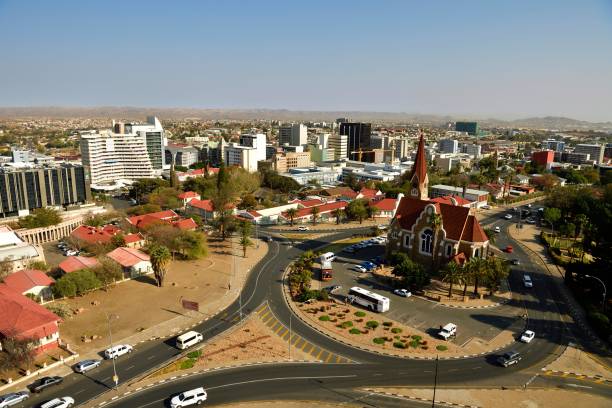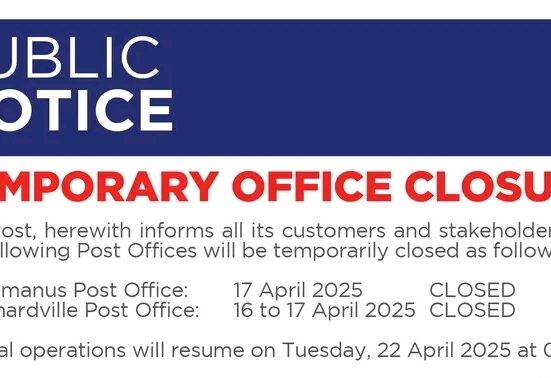Namibia, located in the southernmost part of Africa, may often be overshadowed by larger and more populous countries, but its strategic location is crucial to shaping not only the future of Southern Africa but the broader African continent as well. The country’s position along the Atlantic Ocean, its proximity to key economic players in Africa, and its access to vital regional and international trade routes give Namibia a significant advantage. As the world moves towards greater economic integration, Namibia’s geographical and infrastructural strengths have the potential to make it a vital player in Africa’s future.
1. A Gateway to Southern Africa and Beyond
Namibia’s geographical location positions it as a key gateway for trade and investment, particularly for landlocked countries in Southern Africa. With its extensive coastline along the Atlantic Ocean, Namibia is strategically placed to serve as an entry and exit point for goods moving to and from the heart of Africa.
The port of Walvis Bay, Namibia’s main harbor, is one of the most important trade hubs in the region. It provides crucial access to the sea for landlocked countries such as Botswana, Zambia, and Zimbabwe. These countries rely on Walvis Bay for both imports and exports, bypassing the congested South African ports. Furthermore, with the ongoing improvement of port infrastructure, including modernized terminals and logistics hubs, Namibia is becoming increasingly attractive as a logistics and trade partner for both African and international markets.
In addition to Walvis Bay, Namibia boasts Luderitz, another smaller but significant port. This reinforces the country’s strategic position as a major trade conduit for southern Africa.
2. A Key Role in Regional Economic Integration
Namibia is a founding member of the Southern African Development Community (SADC), a 16-nation economic bloc focused on regional integration, economic growth, and development. Its membership in SADC allows Namibia to actively participate in the reduction of trade barriers, the establishment of common markets, and the promotion of regional development projects. Namibia’s role in SADC is vital for the implementation of shared infrastructure projects, energy initiatives, and transportation networks that promote connectivity throughout Southern Africa.
Namibia’s engagement with SADC not only supports regional economic integration but also enhances the country’s access to a market of over 300 million people. This strengthens Namibia’s position as a regional trade hub and a critical partner for both neighboring countries and distant markets, fostering greater interdependence and shared prosperity in the region.
Moreover, Namibia’s involvement in Africa’s Continental Free Trade Area (AfCFTA), which aims to create a single continental market, is another important aspect of the country’s strategic location. The AfCFTA, which entered into force in 2021, has the potential to unlock new opportunities for trade, investment, and economic cooperation across Africa. Namibia, with its position at the southwestern edge of Africa, is poised to become a crucial trade partner for countries seeking easier access to markets in both the northern and southern parts of the continent.
3. Economic and Political Stability as a Competitive Advantage
For any nation aspiring to become a regional economic hub, stability is a key factor. Namibia’s political landscape is characterized by stability, peace, and democratic governance. Since gaining independence in 1990, Namibia has enjoyed consistent governance under the leadership of the South West Africa People’s Organization (SWAPO), which has contributed to the country’s positive reputation in both African and global political circles.
In addition to political stability, Namibia’s business-friendly environment has further positioned it as an attractive investment destination in the Southern African region. The country’s efficient legal framework, protection of foreign investments, and strong commitment to sustainable development provide investors with the confidence to explore opportunities in key sectors such as mining, agriculture, tourism, and renewable energy.
Namibia’s stable political environment and pro-business policies are especially significant in a region like Southern Africa, where several neighboring countries face political instability and economic challenges. This stability allows Namibia to stand out as a safe, reliable hub for both trade and investment.
4. Natural Resource Richness and Economic Diversification
While Namibia is widely recognized for its mining industry, especially its diamond, uranium, and copper reserves, its strategic location also enables the country to leverage its natural resources for regional economic growth. Namibia’s mineral wealth and the government’s emphasis on the beneficiation of raw materials—or processing minerals domestically rather than exporting them unprocessed—offer tremendous opportunities for industrial growth and job creation.
In addition to mining, Namibia’s location offers a comparative advantage in agriculture, fisheries, and renewable energy. The country’s vast land and favorable climate conditions make it an ideal location for agricultural activities, while its coastal access makes it a prime location for fisheries, particularly in the Atlantic Ocean. Namibia is also becoming a leader in renewable energy, particularly solar and wind power, due to the country’s abundant sunshine and strong wind potential.
The strategic location of Namibia allows for easier export of goods produced in these industries to both regional and international markets, further enhancing its economic prospects and contribution to Africa’s growth.
5. Infrastructure Development: Enhancing Connectivity and Accessibility
A key aspect of Namibia’s strategic location is its modern and well-developed infrastructure, which plays an essential role in facilitating trade and economic activity. The country boasts a network of highways, railways, and airports that link it to the rest of the Southern African region and the world. Namibia’s international airports, such as Hosea Kutako International Airport in Windhoek, connect the country to key international markets, fostering tourism, trade, and business opportunities.
Moreover, Namibia’s ongoing investment in infrastructure development has focused on improving transportation links between rural and urban areas, further boosting regional connectivity. Key projects include the development of the Trans-Kalahari Highway, which connects Namibia to Botswana, South Africa, and Zambia, and the planned extension of the railway system to serve landlocked regions in Southern Africa.
By enhancing its infrastructure, Namibia ensures that goods and services can move efficiently across the region, making it an ideal trade and logistics hub for both landlocked nations and coastal partners.
6. Commitment to Sustainability and Green Growth
As the world moves toward sustainable development and green growth, Namibia’s location offers a unique advantage for harnessing renewable energy, particularly through solar and wind energy. The country’s vast deserts and high solar radiation levels make it one of the most promising locations for solar power generation in Africa.
Namibia is also focusing on climate-resilient development, aligning itself with Africa’s wider goals of promoting sustainable economic practices while addressing the effects of climate change. The country’s investment in green technologies, such as solar and wind energy projects, enhances its position as a leader in environmental sustainability.
This commitment to green growth not only positions Namibia as an energy exporter in the Southern African region but also aligns with the growing global demand for clean energy, providing the country with a competitive advantage as the world transitions to a low-carbon economy.
Namibia’s strategic location at the crossroads of Southern Africa and its proximity to vital regional and international trade routes give it an unparalleled advantage in shaping the future of the continent. As Africa moves toward greater economic integration and seeks solutions to its most pressing challenges, Namibia’s role as a trade hub, political stabilizer, and economic growth engine will be crucial.
By leveraging its location, natural resources, and commitment to sustainable development, Namibia is poised to play a central role in driving Africa’s future success. As the world increasingly looks to Africa as a key player in the global economy, Namibia’s strategic position ensures that it will remain at the heart of the continent’s economic transformation.













